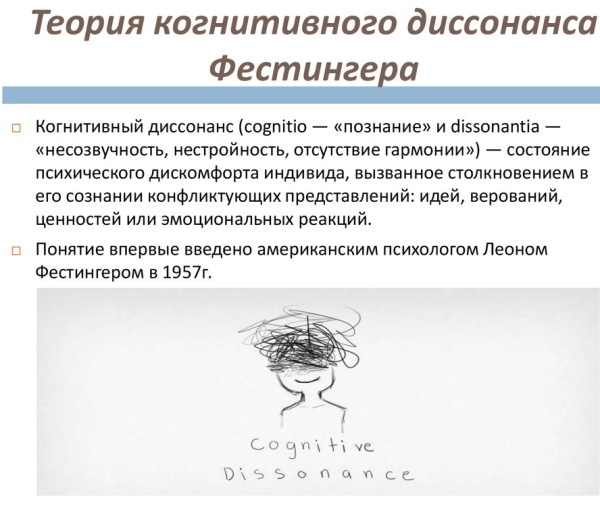Content
- Definition
- Fundamental theories
- Classification
- Characteristics and properties
- Beliefs about yourself
- Beliefs about others
- Beliefs about life and peace
- Functions and role
- Sources of belief
- Goals and objectives
- Methods
- Video about persuasion in psychology
Belief - this is a process in psychology presenting arguments that can motivate or change the views of the audience. More than a millennium ago, Aristotle defined rhetoric as a way of discovering "available means of persuasion." Aristotle taught that rhetoric, or the art of public speaking, presupposes the ability, on a case-by-case basis, to observe the means of persuasion available.
The persuasion process is often defined as human communication that is designed to influence others by changing their world views, values, or attitudes. This definition was introduced in 1976. Simons O΄Keefe.
Communication is based on persuasion. Some scholars argue that communication is persuasion - that all communication in one form or another is a conviction. Indeed, belief is central to some of the most important human functions that make up the basis of politics, religion and health, and at the same time is present in everyday life, for example, in marketing and education children.
In its broadest sense, persuasion is a communicative process by which a message induces a change in the beliefs, attitudes, or behavior of an individual or group.
Beliefs are literally the lens through which a person looks at the world.
Beliefs can:
- influence perception;
- determine what is good, what is bad, true, real;
- distort the point of view in a positive or negative direction;
- direct or limit the actions that a person takes;
- influence relationships;
- decrease or increase the level of happiness.
Each person has within and operates within a complex set of beliefs that define him and the world in which he lives. Beliefs are the way in which the flow of information is processed through the 5 main senses at every moment of every day.
Definition
In the Middle Ages, in the universities of Europe, persuasion (rhetoric) was one of the basic liberal arts that any educated person had to master. From the days of imperial Rome to the Reformation, preachers raised rhetoric to the level of fine art, which used spoken word to inspire any number of actions, such as virtuous behavior or religious pilgrimage. In the modern era, persuasion is most noticeable in the form of advertising.

Political scientists, psychologists who study the process of persuasion in the field of communication research, trace the history of this discipline back to the ancient Greeks.
The heated debate between Plato and the sophists about the dignity and place of persuasion in society is very vivid today. Plato hated what many consider to be a dark and questionable part of the faith - grossly exaggerated claims. The Sophists, on the other hand, embraced this side of the faith, arguing for its practical basis and ubiquitous presence in everyday life.
A generation after Plato and the Sophists, Aristotle saw the merits of both schools of thought and saw rhetoric as a tool for understanding the power of persuasion. Aristotelian description of artistic evidence (ethos, logos and pathos) determined a great some of the research on persuasion for the millennium after it, and this evidence is still used today since. Aristotle's influence on persuasion and, in fact, on communication research is very great.
Persuasion is also defined in psychology as a skill that requires a lot of practice to master. Understanding the psychology of people helps you deliver information more efficiently and have more impact in your personal and professional life.
The study of this concept is essential for understanding human communication, and modern research continues to bring new ideas and concepts.
Some theorists emphasize the similarities between education and persuasion. They believe persuasion is very similar to learning new information through informative communication.
A person's response to persuasive communication depends partly on the message and largely on how the person perceives or interprets it. Words in newspaper ads can be more convincing if they are printed in red rather than black.
Fundamental theories
The following theories are considered foundational in psychology under the heading of attitudes and beliefs:
-
Cognitive dissonance theory. Cognitive dissonance is a term for a state of discomfort that occurs when two or more ways of thinking contradict each other. People like their thoughts and relationships to make sense, and they actively try to avoid the discomfort associated with cognitive inconsistency. Cognitive dissonance theory helps explain this phenomenon. Dissonance occurs when one thought contradicts or challenges another. According to the creator of the theory, Leon Festinger (1957), one of the most striking examples of dissonance is the smoker. Someone who smokes may admit that smoking causes cancer, but they still choose to keep smoking. Thought and acknowledgment that smoking causes cancer contradicts or challenges the thought and action of smoking, thereby creating dissonance.

- Intelligent Action Theory. In this case, belief is associated with behavior. The concept was proposed by an American psychologist of the 20th century. AND. Aizen. Planned Behavior Theory helps to convince people in a wide variety of fields such as politics, health, religion and interpersonal communication, hone messages that are aimed at influencing someone intentions.
- Elaboration Probability Model. It was developed by D. Cacioppo and R. NS. Petty in 1980 This is a theory of persuasion, which suggests that there are 2 different ways to convince people of something, depending on how passionate they are about the topic. When people are highly motivated and have time to think about a solution, for example, choosing a laptop in a store, comparing it with others, evaluating it, conviction occurs along the central path in which all the pros and cons are carefully weighed choice. However, when people are in a hurry or less important to the decision, it is usually easier to convince them peripherally, that is, by specifics. For example, regardless of the quality, a person decided to buy a red laptop because he liked the color.
- Narrative paradigm. Walter Fisher (1984) proposed this paradigm as a means of viewing human communication through a narrative lens. Fischer argued that people across cultures, times and spaces use the inherent power of storytelling to communicate, persuade, and help understand the complexities of existence. The paradigm states that all meaningful communication occurs through storytelling or event reporting. People participate as storytellers and observers of the narratives. This theory also claims that stories are more persuasive than persuasive arguments.
Classification
In psychology, neutral beliefs, resource and limiting ones are considered. The former represent a set of scientific concepts available to humans. Resource includes opportunities on which beliefs are created. The last group includes negative resources.
The whole procedure of persuasion consists of 4 types of influence:
- Informing. Before a person can be prompted to act, he must be convinced why he must act. This is necessary because no one will start doing something without realizing why it should be done. Polish psychologist T. Tomashevsky derived a formula based on this. It reflects a simple thought: in order to induce a person to the desired activity, he should be informed about the goals and the likelihood of achieving it. Informing in the process of persuasion is carried out in various ways, the main one being a story that follows an inductive and deductive path.
-
Clarification. This is a persuasive influence, which uses all the arguments "for" and "against" the object of persuasion.

- Proof. This is a technique for establishing the truth of a statement using facts, arguments and various judgments associated with them. Evidence is usually based on scientific evidence, social practice.
- Efficiency. It is the foundation of persuasion that uses multiple techniques of the persuasion system. Techniques are chosen depending on the circumstances and personality traits of the person being persuaded.
Characteristics and properties
Beliefs are in psychology what a person considers to be an axiom, regardless of whether he has any evidence of objective truth. Many beliefs develop and are inherited. Parents, teachers, mentors, colleagues - they all convey their beliefs, and each person has the opportunity to accept them or not. Over time, they can turn into their own beliefs or be rejected.
Any individual also develops beliefs based on personal experience and feelings. Moreover, a person develops them through his repetitive actions. If he is constantly late, he begins to believe that he does not know how to manage his time, although in fact, changing this shortcut will help changing the alarm to a better one or the habit of going to bed on time sleep.
Beliefs are defined as the concepts that the things that a person thinks are true. If people think certain principles are correct, they believe them. If people think that certain principles are unlikely to be true, they do not believe them.
In their most basic form, beliefs have no value. For example, if someone believes that the sky is blue, this belief can be assessed either positively (if a person likes the color blue and thinks that the sky is will be worse in red), or this belief can be assessed negatively (if the person does not like the color blue and thinks that the red sky would be better). Thus, there is a subtle difference between attitudes and beliefs.
People have 3 main types of beliefs that often form the basis of relationships.
Beliefs about yourself
Strong beliefs about ourselves are what drives or inhibits motivation. They can be limiting (I can’t, I’m bad at it, I just don’t have a skill) or they can empower (I can, I do).
Beliefs about ourselves grow from childhood, and are strongly linked to the environment. People who grow up in a close-knit family that regularly support them are likely to grow up with a sense of self-confidence, although this is not the rule.
How different people absorb or reject these environmental beliefs also depends on their personality. People with a natural questioning mind and curiosity about the world will not blindly accept the beliefs of others. Likewise, people with a strong sense of self will not think about themselves what they are told about them. Instead, they will develop their own self-image by analyzing their strengths and weaknesses.
Beliefs take root in the character, and the person begins to filter everything through them. Speech, body language, expression of emotions - all of this, in one way or another, is driven by these beliefs. Over time, they can turn into shortcuts.
Beliefs about others
Strong beliefs are usually inspired by mentors and parents. Sometimes beliefs are suggested through personal experience. For example, if a person is once confronted with police abuse, a belief may develop that the entire police force is unfair. More extreme experiences can even trigger phobias. Such beliefs determine the attitude and behavior of a person in relation to others.
Beliefs about life and peace
The range of sensations from: "life is terrible", "everything is hopeless" to: "the world is full of possibilities" - refers to the beliefs that develop in relation to the outside world. A person formulates such ideas, starting from the nearest world (house, street, work) up to humanity as a whole. At the same time, the opinion about a group of people, events depends on their own situation and context.
People with high socioeconomic status may think that people with low socioeconomic status do not work hard enough. The second group may think that the first had everything served on a platter. While it is possible that these thoughts are objectively correct, in most cases they are not. Man develops these prejudices against the world because of an innate need to justify his place in it.
While beliefs about others and the world breed stereotypes and can lead to xenophobia, racism and sexism, beliefs about oneself determine a person's self-image. Together, they set boundaries with whom they are comfortable talking, acting, helping, or asking for help. The gap between a person's ideas about others and about himself creates a person's attitude and, as a result, forms an idea of the world as a whole.
It all depends on the direction in which these beliefs lead the person.
Functions and role
Beliefs are an important foundation for attitudes and behavior, but they can be extremely difficult to change. Often times, people will violently adhere to their beliefs, even in the light of disproving evidence. This phenomenon is known in psychology as persistence of beliefs.
Persistence usually arises from people basing their beliefs on information they find logical, persuasive, or in some way attractive. Hence, even when beliefs appear to be refuted by new evidence, the basis of what a person believes may still exist.
Beliefs affect a person's life in every way. Because from the moment of birth, they form the perception of the world. And perception is human reality. This is why it is extremely important to notice your own beliefs and get to know their content so that you can consciously understand how they affect reality. Only when an individual is aware of his beliefs can he change them.
For example, a person believes that he has severe anxiety, and it prevents him from doing what he wants. Under the influence of this belief, perception will affect life, because this belief literally changes the perception of the world. And as the perception of reality changes, so does the behavior of the individual in this reality.
Because the person believes they have severe anxiety, they will see, hear, feel, taste and smell what confirms that belief. Faith changes his perception of the world so that he sees a world full of anxiety and stress.
Belief is an element of the worldview in psychology that affects life, forcing a person create and perceive your reality and the world in such a way that this belief seems to be true, absolute.
Another example: a person considers himself to be a failure. He will perceive the world as a source of bad luck, and will constantly remember the paths in which he was defeated. And because of this, they will continue to fail.
Thus, the function of beliefs is that beliefs affect the life of an individual, changing his perception. reality, which in turn leads to behavioral change and can even cause biological change body.
Understanding how beliefs are formed and how they underlie subsequent attitudes and behaviors is important because it can help understand social phenomena:
- prejudice and discrimination;
- help and aggressive behavior;
- impression formation;
- submission to authority;
- interpersonal attraction;
- group decision making.
Beliefs are the main type of social knowledge in psychology.
Sources of belief
The sources of beliefs are presented in the table:
| Proof of | The logical and rational formation of beliefs based on evidence that supports a causal relationship. |
| Traditions | Family and social traditions. |
| Power | Beliefs are usually passed down from parents, but they can also come from a religious leader, teacher, or any other person in authority. |
| Associations | Beliefs can be formed through people or groups with whom a person is associated. |
| Revelations | Beliefs that are formed through "divine intervention", guesswork, or "sixth" sense. |
Goals and objectives
Intelligence and culture have evolved as a way to accelerate human development - not physically, but mentally. Cultural evolution is much faster than biological evolution. Belief systems evolved as part of this development to ensure human survival.
In addition to this ultimate goal of survival, there are also subgoals of belief systems in various aspects of life.
- Beliefs about effective decision-making, negotiation and business conduct exist to help achieve a certain status in the social hierarchy.
- Beliefs about how to deal with things like insecurity and anxiety exist to help maintain mental health.
- Beliefs about sexuality and dating behavior are designed to ensure that a person's genes are passed on to the next generation.
In other words, subgoals of belief systems exist to ensure that a person is able to meet certain needs, to develop self-esteem.
Methods
There are certain methods or appeals to persuasion: appeal to the mind, emotions, character.
- The first method is a call to reason. The method of appeal to reason uses a logical argument, while everything about persuasion is focused on logic and the scientific method. This method is best for people who need proof of something and who do not accept arguments based more on faith than fact. If you try to convince a group of scientists to follow the belief that the Earth revolves around the Moon, you need to have a lot of evidence to support this, otherwise they cannot be convinced of this argument.
- The second method is to appeal to emotions. The call to emotion is not based on evidence, but on the emotions that the person is experiencing. This can often be a more effective approach for the general population because people can often be manipulated by their emotions rather than their minds. Persuasion uses seduction, tradition, or even pity to get people to agree. For example: "You will never be satisfied in life if you do not take this opportunity."
- Ethics Appeals, a person's character is associated with ethical reasons for which the audience should believe the arguments, or influence them. For example: "Doctors all over the world recommend this type of treatment."
The constant conflict of society lies in the fact that the beliefs and values of an individual determine his personal attitude and behavior towards the world, however the moral values of society and the current ethical rules accordingly restrict actions the individual.
A person usually chooses a decision to behave in accordance with the morality and ethics of the society in which he lives. Even if personal values conflict with the values of society, a person will still follow social rules because he is afraid of the consequences.
Beliefs are not inscribed in the DNA of the individual. They are assimilated, developed and grown from the moment of birth. They reach their current level through their environment, experiences, events and decisions in life. A person with increased self-awareness may decide to change beliefs and values and replace them with a new system that empowers and supports the goals and vision of life.
An individual's beliefs in psychology are ideas that he believes to be true. Many of these beliefs constitute personal values that determine attitudes, that is, how a person relates to others, to himself, how he approaches any situation. All three components ultimately determine behavior or how a person acts.
Author: Belyaeva Anna
Video about persuasion in psychology
50 ways to be convincing. The psychology of persuasion:


